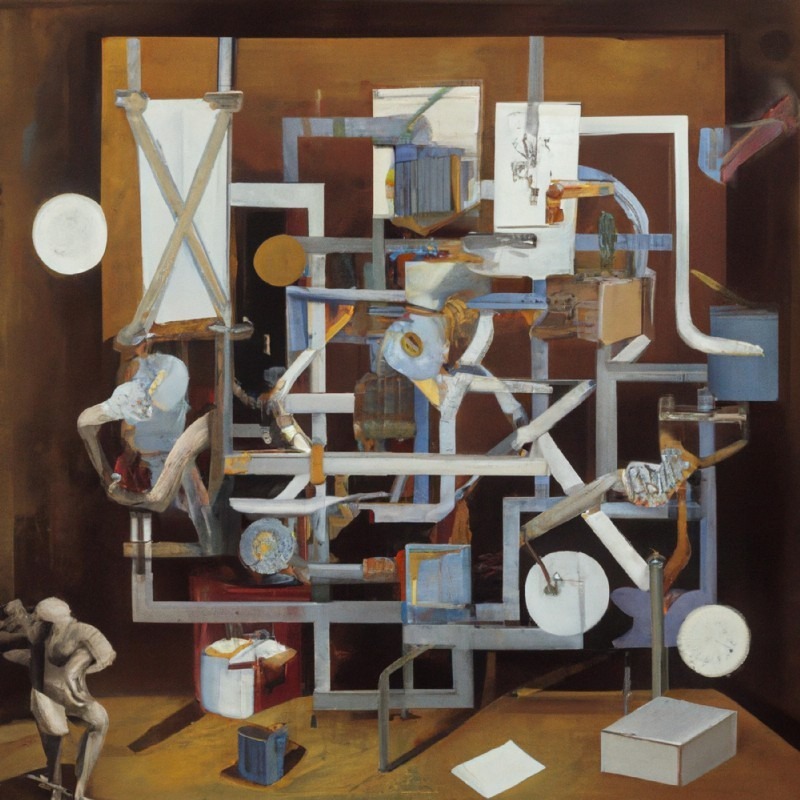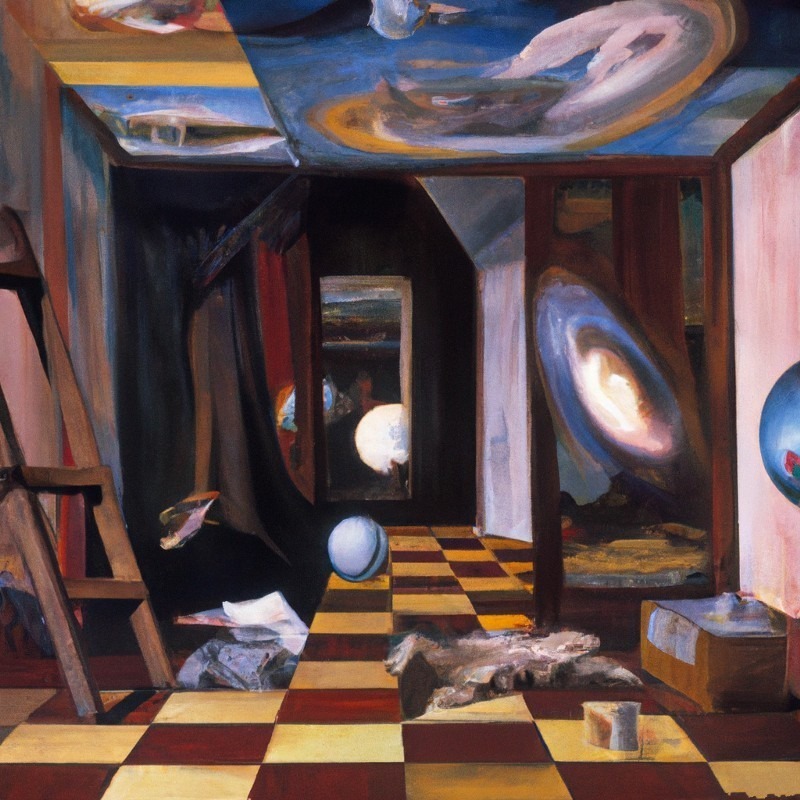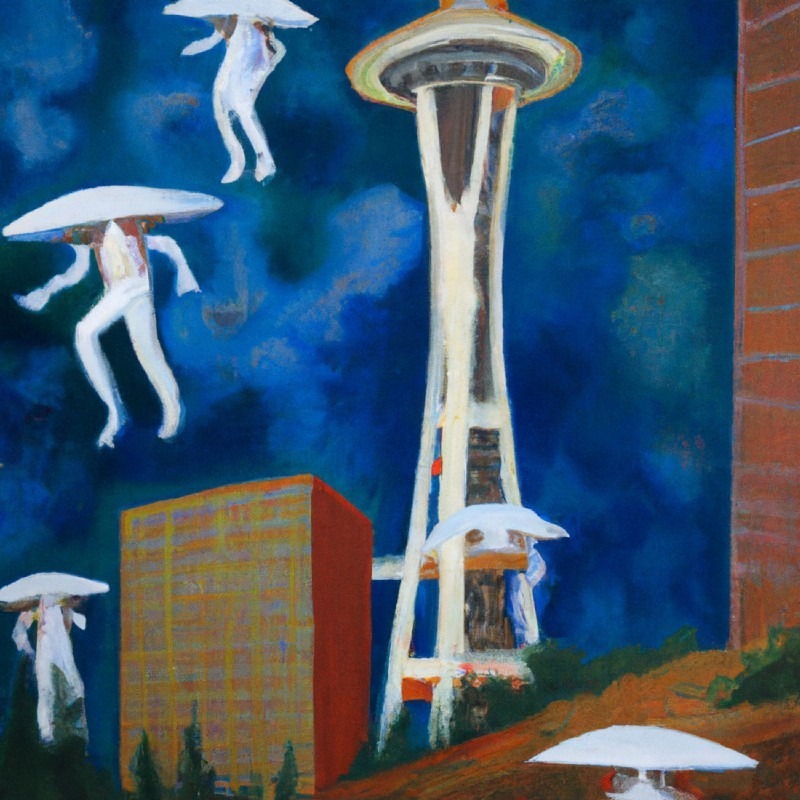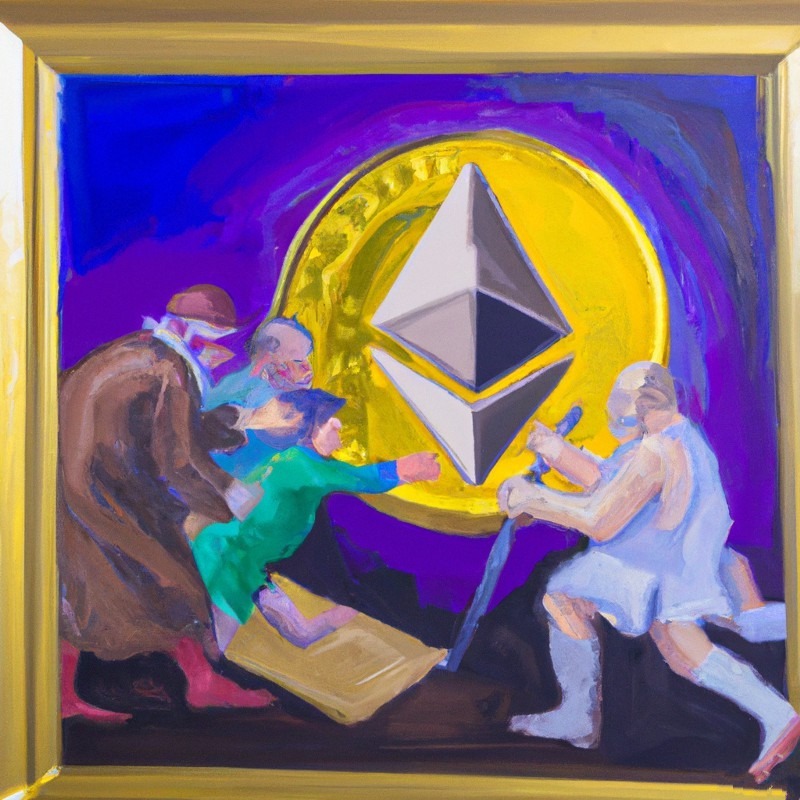Quantum mechanics is a branch of physics that describes the behavior of particles at the atomic and subatomic level. It focuses on the principles of superposition and entanglement. Examples include quantum computing, where qubits harness superposition and entanglement for exponentially faster calculations, and quantum cryptography, which utilizes quantum properties to secure communication channels.
Exploring the Quantum Frontier: Discovering the Potential of Quantum Sensing in Improving Sensitivity and Precision by Jack Stangeways

Quantum sensing is a type of technology that uses the principles of quantum mechanics to measure physical phenomena with high accuracy and sensitivity. Quantum sensing relies on the unique properties of quantum systems, such as superposition and entanglement, to measure physical quantities with high precision.
One of the key advantages of quantum sensing is that it allows for the measurement of extremely small quantities, such as the position of a single atom or the magnetic field of a single electron. This makes quantum sensing a powerful tool for a wide range of applications, including precision measurement, imaging, and sensing of biological and chemical systems.
However, there are also challenges and limitations to the use of quantum sensing. For example, quantum sensing systems can be complex and difficult to build and operate, and they may be vulnerable to noise and other sources of error. Additionally, the principles of quantum mechanics that are used in quantum sensing may be difficult to understand and apply in practice.
Overall, quantum sensing is a promising and rapidly developing field that has the potential to revolutionize the way we think about measurement and sensing. However, it is important to recognize that quantum sensing is still a relatively new field and that there are many challenges and limitations that need to be addressed in order to realize its full potential.
To learn more about emerging trends by Jack Strangeways
Visit Future Center Ventures
Or my new book available on Amazon
The Quantum Connection: Exploring the Phenomenon of Entanglement and its Impact on Our Understanding of the Universe by Jack Strangeways

In quantum mechanics, two particles can become “entangled,” meaning that they exhibit a type of correlation that cannot be explained by classical physics. When two particles are entangled, their properties, such as their spin or polarization, become interconnected, even if the particles are separated by large distances. This phenomenon is known as “non-local” behavior.
To understand how entangled quantum states work, it is helpful to consider an example. Suppose that two particles, called particles A and B, are entangled and separated by a large distance. If the spin of particle A is measured, it will have a certain value, such as “up” or “down.” At the same time, the spin of particle B will also be determined, even though it is not directly measured. In other words, the state of particle A is “linked” to the state of particle B, and measuring one particle instantaneously determines the state of the other particle. This is known as the “instantaneous collapse of the wave function.”
Entangled quantum states are a fundamental concept in quantum mechanics and have a wide range of potential applications, including quantum computing and communication, as well as basic scientific research. However, the concept of entangled quantum states is still not fully understood and continues to be the subject of much research and debate in the scientific community.
To learn more about emerging trends by Jack Strangeways or the artwork featured.
Visit Future Center Ventures
Or my new book available on Amazon
Unlocking the Secrets of the Universe: Bell’s Inequality Theorem and the Quest to Understand Reality by Jack Stangeways

Bell’s inequality theorem is a theoretical result in quantum mechanics that suggests that certain predictions of quantum theory are incompatible with the principles of local realism. Local realism is the idea that physical systems have definite properties (realism) and that these properties are independent of whether they are being observed (locality).
The theorem was proposed by physicist John Stewart Bell in 1964 as a way to test the predictions of quantum theory against the principle of local realism. Bell’s inequality states that the correlations between the outcomes of measurements performed on two separated particles must satisfy a certain mathematical inequality. If the inequality is violated, it suggests that the predictions of quantum theory are incompatible with the principles of local realism.
To understand how Bell’s inequality works, consider an example involving two entangled particles, called particles A and B. According to quantum theory, the state of particle A can be correlated with the state of particle B, even if the particles are separated by a large distance. This is known as non-local behavior. However, if the principle of local realism is true, then the state of particle A must be independent of the state of particle B, and any correlations between the two particles must be the result of some underlying hidden variables.
Bell’s inequality theorem provides a way to test whether the predictions of quantum theory are compatible with the principle of local realism. If the inequality is violated, it suggests that the principles of local realism cannot fully explain the behavior of quantum systems.
Bell’s inequality has been tested experimentally using a variety of methods, and the results of these experiments have consistently supported the predictions of quantum theory. This has led many scientists to conclude that the principle of local realism does not hold for quantum systems, and that the non-local behavior predicted by quantum theory is a fundamental aspect of nature.
To learn more about emerging trends by Jack Strangeways.
Visit Future Center Ventures
Unleashing the Paradox: Shrodinger’s Cat and the Dilemma of Quantum Mechanics by Jack Strangeways

Schrödinger’s cat is a thought experiment, proposed by Austrian physicist Erwin Schrödinger in 1935, that illustrates the concept of superposition in quantum mechanics. In the thought experiment, a cat is placed in a sealed box with a device that has a 50% chance of killing the cat after a certain period of time. According to the principles of quantum mechanics, until the box is opened and the state of the cat is observed, the cat is both alive and dead at the same time. This is known as a superposition of states.
There are several interpretations of this thought experiment, including the Copenhagen interpretation, the Von Neumann interpretation, and the Bohr interpretation.
The Copenhagen interpretation, developed by Danish physicist Niels Bohr and others, suggests that the cat is in a superposition of states until the box is opened and the state of the cat is observed. At that point, the superposition collapses and the cat is either alive or dead. According to the Copenhagen interpretation, the act of observation plays a crucial role in determining the state of a quantum system.
The Von Neumann interpretation, developed by mathematician John von Neumann, suggests that the cat is in a superposition of states until the box is opened and the state of the cat is observed. At that point, the superposition collapses and the cat is either alive or dead. According to the Von Neumann interpretation, the act of measurement causes the collapse of the wave function, which represents the probability of finding a particle in a particular state.
The Bohr interpretation, also known as the Copenhagen interpretation, suggests that the cat is in a superposition of states until the box is opened and the state of the cat is observed. At that point, the superposition collapses and the cat is either alive or dead. According to the Bohr interpretation, the act of observation plays a crucial role in determining the state of a quantum system.
Overall, the Schrödinger’s cat thought experiment illustrates the strange and counterintuitive nature of quantum mechanics and the different ways in which it can be interpreted.
To learn more about emerging trends by Jack Strangeways or his artwork.
Visit Future Center Ventures
Or my new book available on Amazon
Unlocking the mysteries of the universe: Einstein and Bohr’s Variables and the quest to understand the world around us by Jack Strangeways

Einstein and Bohr differed in their views on the concept of hidden variables in quantum mechanics.
In the early 20th century, the Danish physicist Niels Bohr developed the Copenhagen interpretation of quantum mechanics, which is a framework for understanding the behavior of quantum systems. According to the Copenhagen interpretation, the state of a quantum system is described by a wave function, which represents the probability of finding a particle in a particular state. The act of observation, or measurement, causes the wave function to collapse, determining the state of the system.
Albert Einstein, however, was not satisfied with the Copenhagen interpretation and believed that it was incomplete. He argued that the concept of wave function collapse was not a fundamental aspect of quantum mechanics and that there must be some underlying “hidden variables” that determine the state of a quantum system. Einstein believed that these hidden variables could be used to explain the behavior of quantum systems in a more deterministic and predictable way.
Bohr and Einstein had a famous series of debates over the concept of hidden variables, and their disagreement became known as the “EPR paradox,” named after Einstein, Podolsky, and Rosen, who published a paper on the topic in 1935. Despite Einstein’s efforts to prove the existence of hidden variables, the majority of the scientific community has accepted the Copenhagen interpretation as the most accurate and complete description of quantum mechanics.
To learn more about emerging trends by Jack Strangeways or the artwork featured.
Visit Future Center Ventures
Or my new book available on Amazon
“The Simulation Hypothesis: Are We Living in a Computer Simulation? A Thought-provoking Exploration of the Simulation Argument” by Mark Whelan

The Simulation argument, proposed by philosopher Nick Bostrom in 2003, is a thought experiment that suggests that it is possible that our reality is actually a computer simulation. According to Bostrom, one of the following three statements must be true:
- Almost all civilizations at our level of technological development go extinct before they are able to create a “posthuman” civilization capable of creating ancestor simulations.
- A posthuman civilization is not interested in creating ancestor simulations.
- We are almost certainly living in a computer simulation.
Bostrom’s argument is based on the idea that, as technology advances, it will become increasingly possible to create realistic virtual worlds that are indistinguishable from reality. If a posthuman civilization were to create a large number of ancestor simulations, it is likely that the vast majority of minds that have ever existed would be simulated rather than “real.” In this case, the probability that we are living in a simulated reality would be close to 1.
The Simulation argument has generated a significant amount of discussion and debate within the philosophical and scientific communities. Some argue that the argument relies on certain assumptions that may not be true, such as the assumption that a posthuman civilization would be interested in creating ancestor simulations. Others argue that the argument raises important questions about the nature of reality and the limits of human knowledge.
Overall, the Simulation argument is a thought-provoking idea that challenges our assumptions about the nature of reality and highlights the limits of our understanding of the universe. However, it is important to recognize that the argument is purely speculative and has not been proven to be true or false.
To learn more about emerging trends by Mark M. Whelan or his artwork.
Visit Future Center Ventures
“Fractional Ownership: The Rise of a New Digital Asset Class and How it’s Changing the Game of Investment” by Mark M. Whelan

Fractional ownership is a concept that refers to the idea of owning a share of an asset, rather than the entire asset. This concept is becoming increasingly important in the context of emerging technologies, such as autonomous vehicles and drones, because it allows multiple parties to share the costs and benefits of owning and using these technologies.
One of the key advantages of fractional ownership is that it can make new technologies more accessible and affordable. For example, the cost of buying and maintaining an autonomous vehicle or drone can be prohibitively expensive for many individuals or businesses. By allowing multiple parties to share the costs of ownership, fractional ownership can make these technologies more accessible and affordable.
Another important advantage of fractional ownership is that it can help to accelerate the adoption of new technologies. By allowing multiple parties to share the costs and benefits of ownership, fractional ownership can make it more attractive for businesses and individuals to invest in new technologies. This, in turn, can help to drive innovation and growth in emerging technology markets.
Additionally, fractional ownership can help to improve the utilization of new technologies. Because multiple parties can share the ownership of technology, it can be used more often and in more diverse ways. For example, an autonomous vehicle or drone that is owned by multiple parties can be used for a wider range of purposes, such as transportation, delivery, and surveillance. This can help to maximize the value of these technologies.
Overall, the importance of fractional ownership in emerging technologies lies in its ability to make these technologies more accessible, affordable, and widely used. By allowing multiple parties to share the costs and benefits of ownership, fractional ownership can help to drive innovation and growth in emerging technology markets.
To learn more about emerging trends by Mark M. Whelan or his artwork.
Visit Future Center Ventures
